Saturday, December 30, 2017
Mom Will Be Busy Tomorrow
Written by Wild Bill on The Prepper Journal.
While the Holiday is Monday, January 1, 2018, tomorrow, December 31, 2017, the day we don’t post because it is a Sunday, is the day mom wants us to remind you about.
She wants you to remember her good advice of doing all things in moderation. She wants to remind you that Uber and Lyft and even Taxi’s – the vehicles, not the 70’s sitcom – are ALWAYS available if you are still living on the grid. She wants us to drop the snide remark that the average cost of a first DUI can run up to $16,700 when you factor in all costs – insurance increases, lawyers fees, loss of license and vehicle use and on and on, and that is only if you do no harm to yourself or others.
She would beat us if we didn’t say that if you plan to party eat first. If your are short on time a Jamba Juice smoothie will hydrate you and slow the absorption rate of things to come.
She also wants you to know that becoming a 15 minute hero on TheChive, Break.com or YouTube will haunt you for life. Employers, colleges, organizations that screen members and a future candidate for a spouse can all find this information, forever. And a current spouse who wants to terminate the relationship can forward these to his or her lawyer, to present when setting alimony schedules, deciding children’s custody arrangements, and dividing up YOUR stuff. Mom’s think of everything.
She also thought about you crossing the path of people who have not heeded their mom’s advice, so she wants you to be defensive, not take risks, leave road-rage for Mario Kart.
She has a whole bunch of other stuff like getting sick THERE and NOT after you come home, but avoiding that in the first place is what will make her smile.
2017 has been a hell of a year for some in Houston and in Florida and at concerts in Las Vegas (I still only hear crickets) and under ruble in Mexico City, but everyone reading this has gotten through that and so much more. Tomorrow is NOT the time to let your guard down.
Always the Prepper she says “enjoy, have fun, see old friends, meet new ones, but your singular mission is to come home safe and to do no harm to others. Many, many good things have happened in 2017 as well and 2018 looks to be a great year to stick around for, so just do it.”
We love mom.
The post Mom Will Be Busy Tomorrow appeared first on The Prepper Journal.
from The Prepper Journal
Don't forget to visit the store and pick up some gear at The COR Outfitters. How prepared are you for emergencies?
#SurvivalFirestarter #SurvivalBugOutBackpack #PrepperSurvivalPack #SHTFGear #SHTFBag
Friday, December 29, 2017
Finding Storage Space and Building a Rotating Canned-Food Shelf
 If you live in an apartment, mobile home, travel trailer, or other small space, you may be wondering where in the heck you’re going to put all the food and survival gear recommended in the that you see recommended on this and other survival blogs. Well, to be honest, you may not have enough storage space for everything, but you probably have more available space than you think.
If you live in an apartment, mobile home, travel trailer, or other small space, you may be wondering where in the heck you’re going to put all the food and survival gear recommended in the that you see recommended on this and other survival blogs. Well, to be honest, you may not have enough storage space for everything, but you probably have more available space than you think.
Here are a few ideas to help you find the necessary space to get your food storage squared away after your shopping trip or order of long-term storage foods arrive at your door.
- Under the bed. Flat rollout bins...
from TheSurvivalistBlog.net RSS Feed
Don't forget to visit the store and pick up some gear at The COR Outfitters. Are you ready for any situation?
#SurvivalFirestarter #SurvivalBugOutBackpack #PrepperSurvivalPack #SHTFGear #SHTFBag
Prepper News and Notes 12/29/2017
If you’ve not bought my book “The Prepper’s Guide to Surviving the End of the World, as We Know It: Gear, Skills, and Related Know-How” and you want it in the paperback version then you better buy it now because after Dec 31, 2017, it will no longer be available in paperback or on Amazon.
So if you want it then get it now because your time is running out…
*
Also, if you’ve not subscribed to our newsletter and updates via your email and want to be included in the random drawing for a new Mora Bushcraft Survival Knife then you need to subscribe (it’s...
from TheSurvivalistBlog.net RSS Feed
Don't forget to visit the store and pick up some gear at The COR Outfitters. Are you ready for any situation?
#SurvivalFirestarter #SurvivalBugOutBackpack #PrepperSurvivalPack #SHTFGear #SHTFBag
Is This Far Enough Off the Grid?
Written by Wild Bill on The Prepper Journal.
I know, but we can dream can’t we? This just might work if you want to be your own grid-square. A place with almost unlimited and unobstructed views, enough acreage to sight in your own 105 Howitzer and within driving distance of Lake Tahoe, south east of Reno Nevada, but far enough from the Golden Horde.
You have unobstructed views is all directions, a great house, even a lawn to mow, one that can be converted into a vegetable garden.
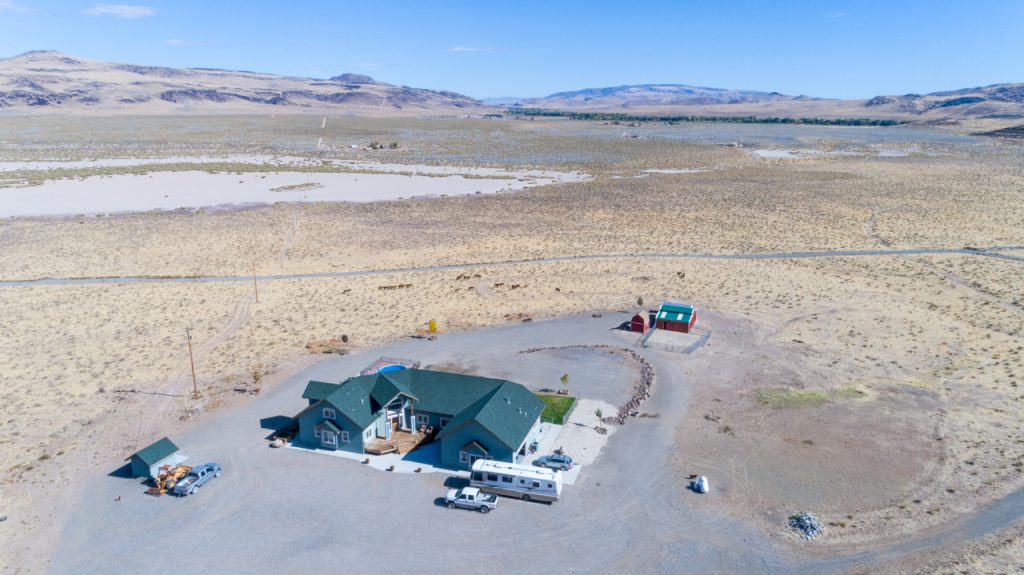
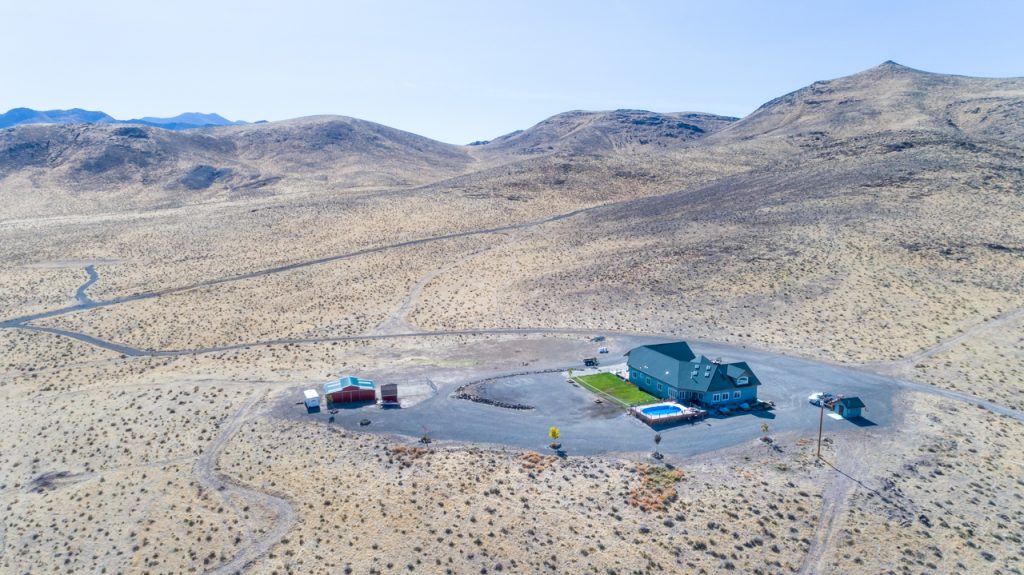
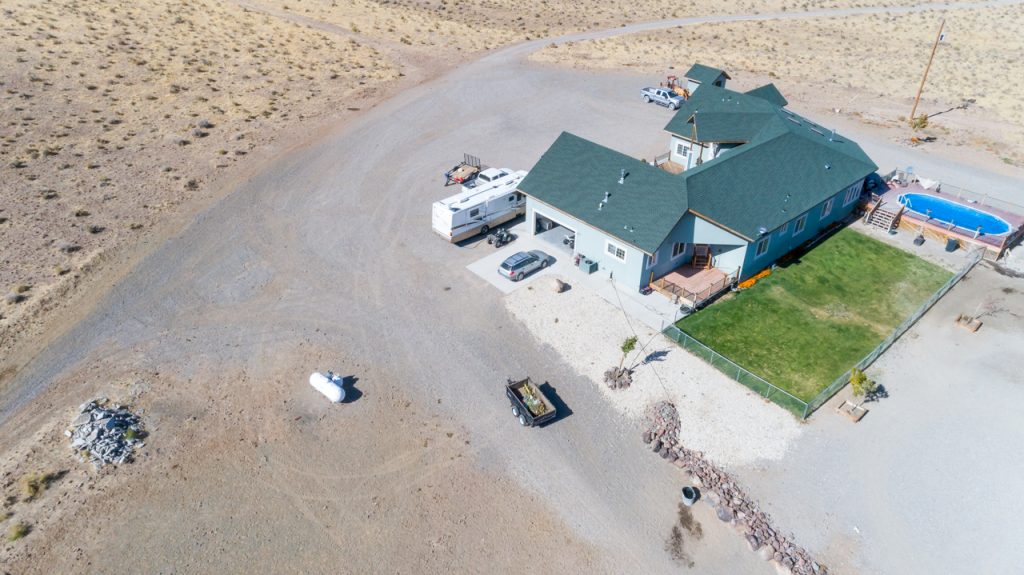
Good curb appeal, though there is no curb in the area.

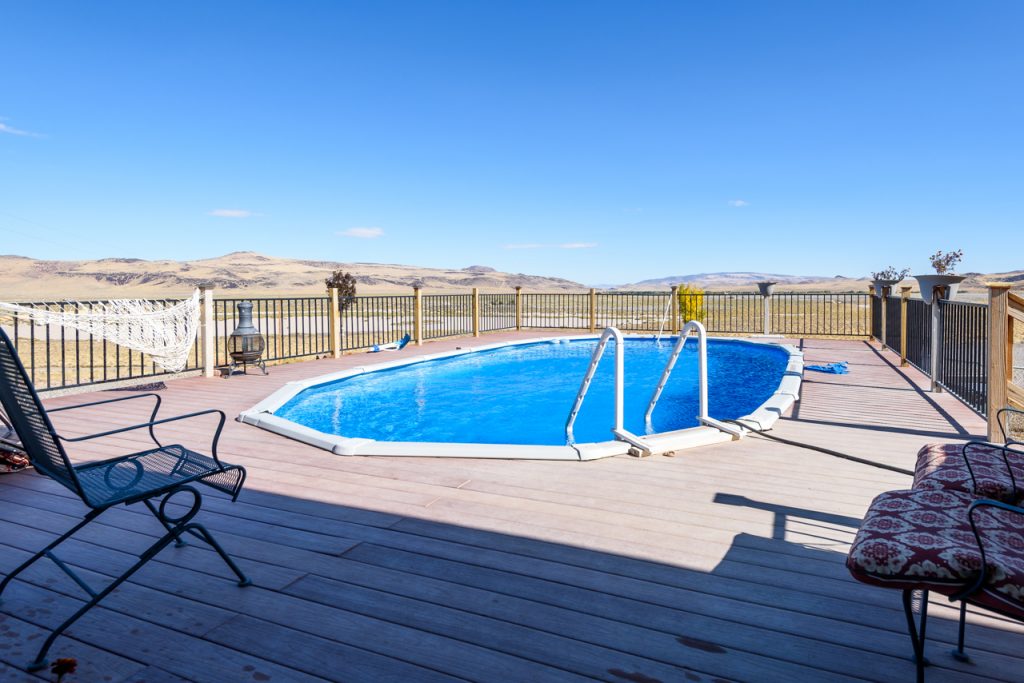
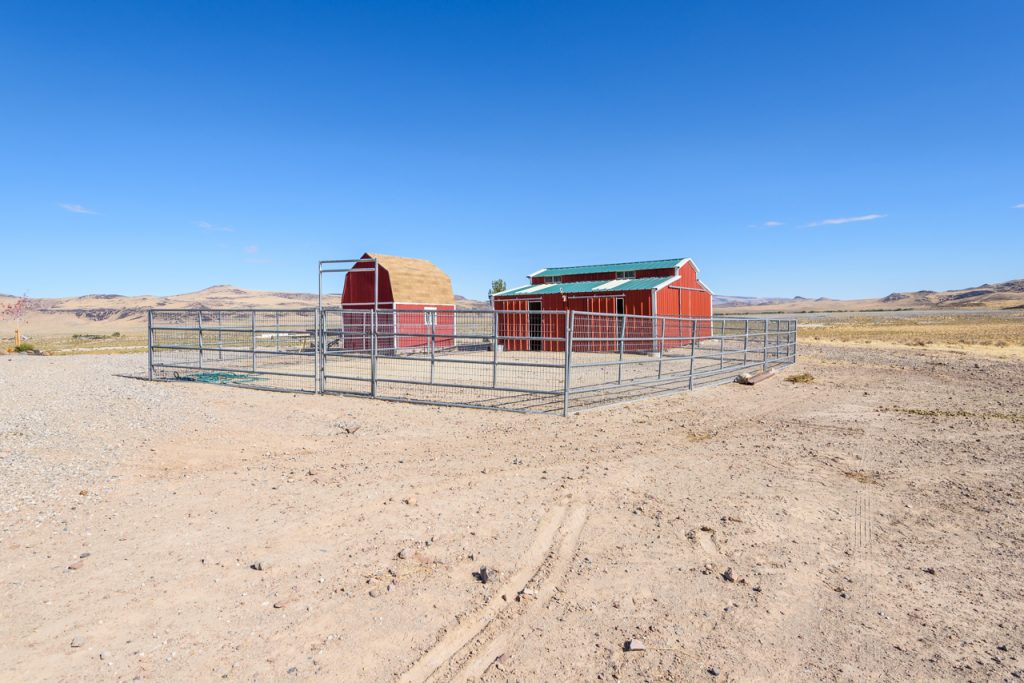
On city power but plenty of space for a generator and a big Faraday cage. Places to raise chickens and rabbits and other livestock.
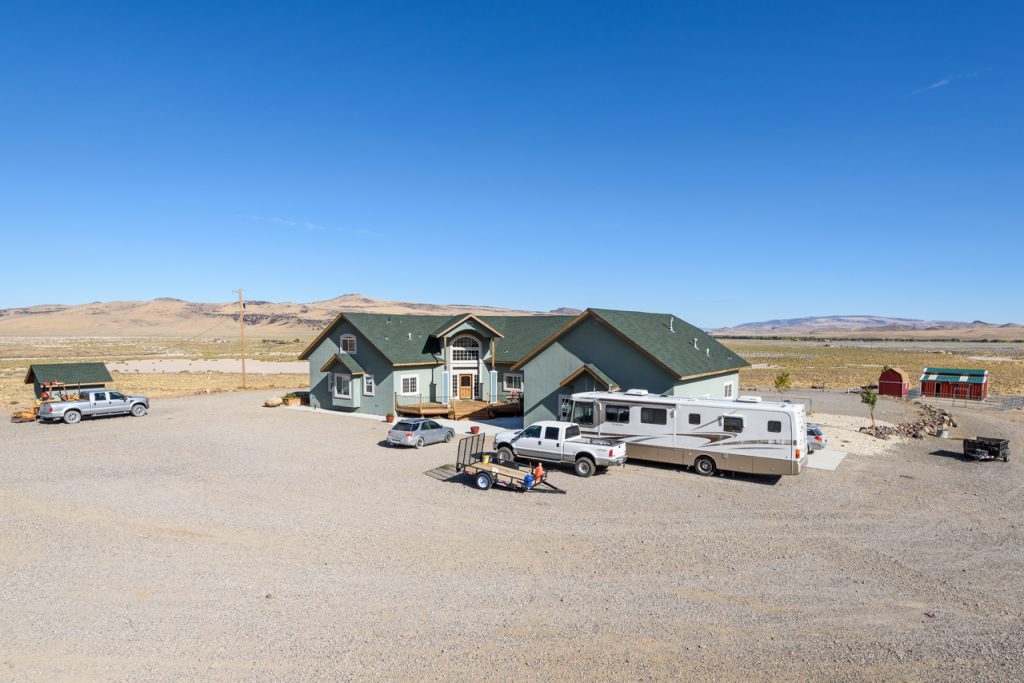
No restaurants close but it has its own good place to eat:

…and play…

…and keep an eye on the neighbors.

Automated lawn services.
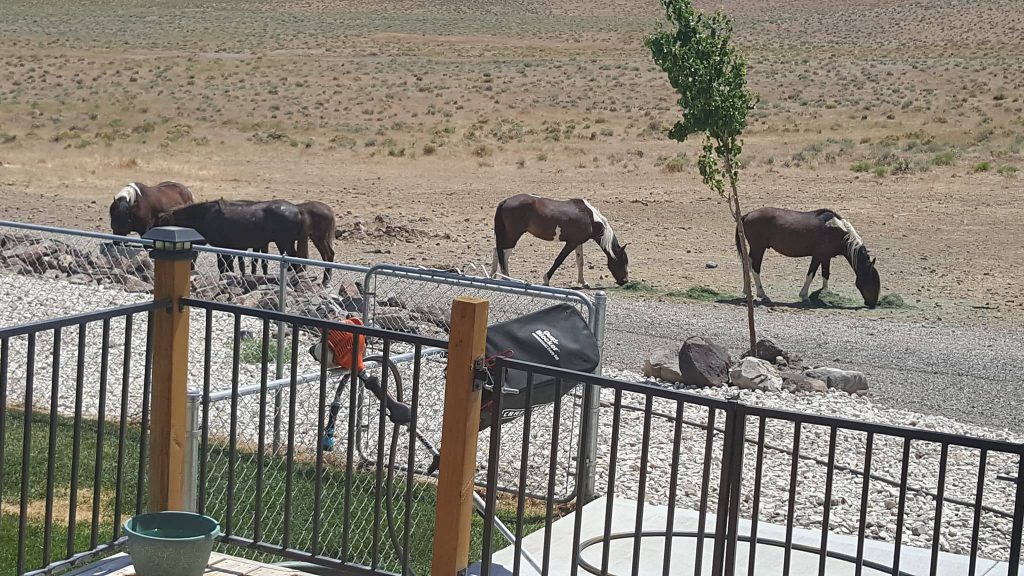
An established vegetable garden.
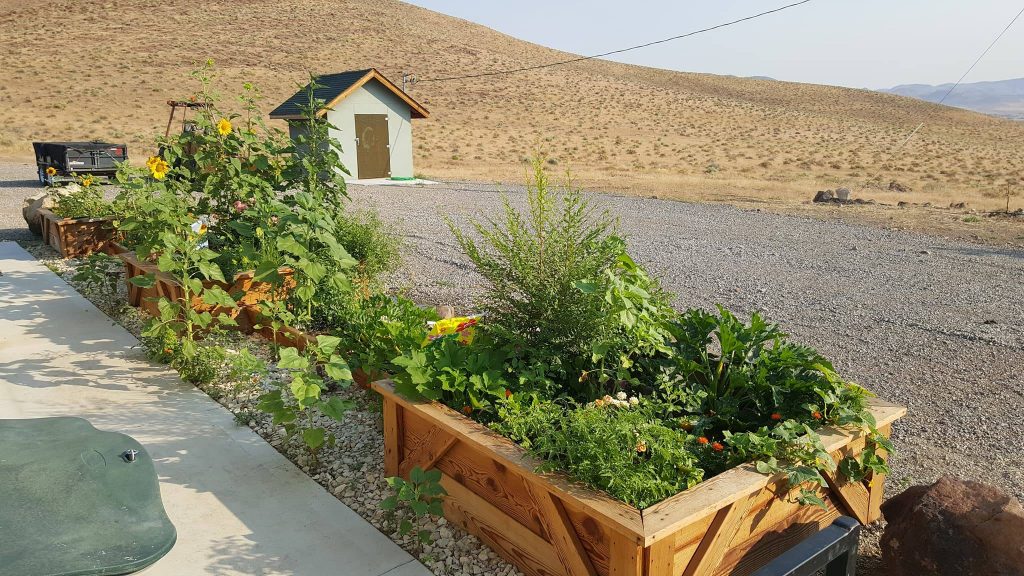
And the clincher, you never know when food for a week is going to walk into range.
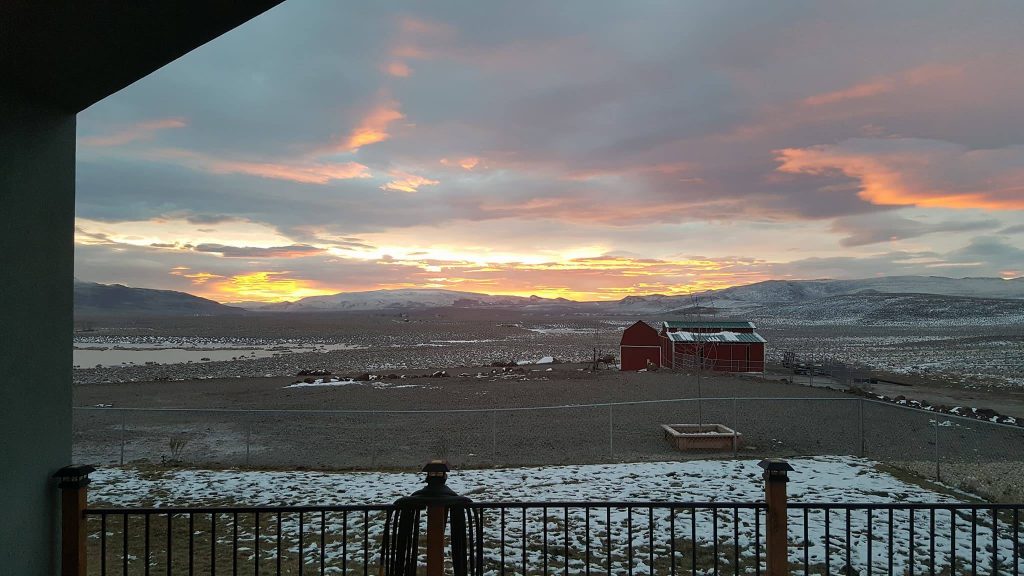
I believe we, each of us, at some point dream of leaving the rat-race behind, not hearing traffic, low-level airplanes, sub-woofers mounted in cars that may fall apart at any moment. Such places do exist for a price.
Click Here to View the Listing
The post Is This Far Enough Off the Grid? appeared first on The Prepper Journal.
from The Prepper Journal
Don't forget to visit the store and pick up some gear at The COR Outfitters. How prepared are you for emergencies?
#SurvivalFirestarter #SurvivalBugOutBackpack #PrepperSurvivalPack #SHTFGear #SHTFBag
Essential Guide On How To Store Seeds In Winter
You’ve worked hard all year to grow your crop. You’ve preserved enough food of your harvest to get you through winter. You’ve chosen and harvested your seeds and dried them, and now have them safely stored back for winter. Or so you think.
There are a few details that you need to pay attention to if you want to have viable seeds come spring and that’s what we’re going to talk about today.
Dry Your Seeds Well
Hopefully you have a beautiful supply of heirloom or open-pollinated survival seeds just waiting to be planted next spring, so let’s make sure that they make it that long.
The first step in protecting your seeds in the winter is to make sure that they’re dried properly. If you put your seeds in storage before they’re adequately dried, they’ll mold and be worthless.
So how do you tell if your seeds are dry enough? Easy. They will have zero discernable moisture in them whatsoever. Pumpkin and cucumber seeds will snap in half rather than bend. Tomato seeds won’t have any of that gooey layer left on them and when you press your nails into it, it should be firm.
Corn and beans should be hard – you should need a hammer to break them. Pay close attention to the seeds as soon as you dry them because if you see any condensation inside of the bag, take them out immediately and dry them some more or else they’ll mold.
You Can Freeze Seeds
Freezing is actually part of the life cycle for many seeds. It drops from the plant in late summer or early fall then lies under the snow all winter. When the weather gets warm and the temperature of the soil increases, the seed begins to sprout. It’s just the nature of things.
Seed banks store all of their seeds in temperature-controlled, refrigerated or cryogenic chambers, so it’s perfectly fine to refrigerate or freeze seeds as long as you do it properly. The main issue that you have to worry about is moisture. You went to a ton of trouble to dry them. The last thing you need to do is reintroduce moisture back into them.
That’s why you need to break out your cryogenic chamber. What? You don’t have one?
Well luckily, you won’t need one because a home fridge and freezer are just fine. In fact, refrigerating them extends the viable lifespan of seeds considerably and freezing extends their viability to at least five years, and some as long as twenty.
There are a couple of tricks to storing seeds no matter whether you choose to freeze or refrigerate them or not. We’ve already discussed the first step – drying the seeds well. The second step is making sure they stay dry, so you need to store them in an air-tight, water-tight container. A freezer bag is perfectly good for this as long as there are no holes.
Storing Your Seeds
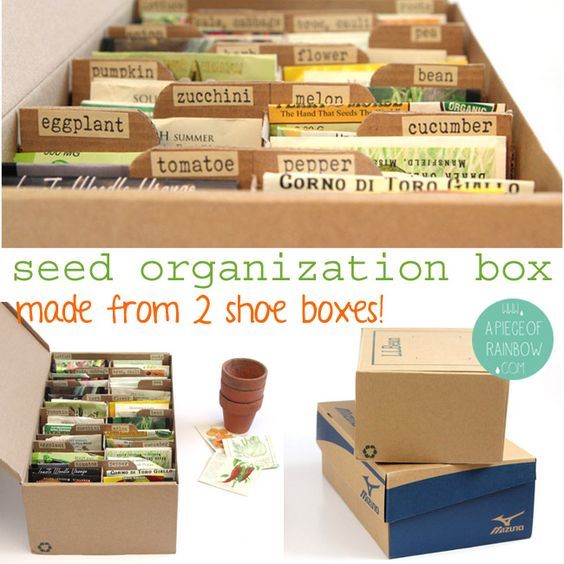 Next, you need to store them in a cool, dry place.
Next, you need to store them in a cool, dry place.
You don’t want to risk moisture reaching your seeds and you don’t want the temperature to fluctuate. Storing in a warm area decreases the lifespan of your seed.
Now that you’ve got the seed in a good storage bag, you want to store them somewhere that the temperature will remain fairly constant.
A cellar is good for this, as is a cool pantry as long as it stays cool.
Freezing is better for this than refrigerating, especially if you’re using your home fridge/freezer that has other food stored in it.
Another good idea is to put it in a chest freezer or an outside fridge that has a freezer that you rarely or never use.
There’s no better way to ensure a constant temperature than to keep them stored in a freezer that’s only opened a few times a year.
Label Your Seeds
This is important for a couple of reasons. First, many of the tiny seeds look alike, at least until you gain some experience. Even then, it’s impossible to tell the difference between varieties of plants. A lettuce seed typically looks like a lettuce seed. Same thing with carrot seeds. You can’t tell the variety just by looking at it.
Another reason that it’s good to label is so that you can practice FIFO – First In, First Out – with your seeds just like you do with your stockpile. Label the container with the seed variety and the year. Some people add a few directions in with the seeds that they’ve gained from experience. It’s even better to start a seed journal to keep track of how your garden grows.
How to Tell if Seeds are Good
This isn’t a perfect indicator, but it’s pretty darned accurate. If you want to tell if the seeds are still good, drop them in water. If they sink, they’re good. If they float, they’re not. Of course, you don’t want to go and get the seeds wet if you’re not going to use them, so just test a few of them. That sounds like common sense, but it’s always better to give too many directions than not enough.
How to Tell How Many of Your Seeds Will Grow
There’s nothing more disappointing as a gardener, or even worse, as a hungry person, than planting seeds that don’t sprout. If you’re depending on your crop to feed yourself and your family, then growing plentiful crops becomes a necessity.
Therefore, you need to know how to tell how many seeds out of a crop are going to grow. You can get a good idea of this by doing a test germination run.
A couple of weeks before you’re ready to plant, put at least 10 seeds from a single batch onto one half of a paper towel then fold the other half of the towel over the seeds. Spray it down with enough water to moisten the towel. It may be helpful to spritz it with a 1:10 bleach to water ratio to keep them from molding.
Place them in the baggie and only partially seal it so that air can still get in. Label the bag and start a record with the date and how many seeds were started. Store it in a warm, dark place and dampen the towel as necessary to keep it from going dry. Within a couple of days, you should start to see germination.
Every day, record how many seeds either germinate or mold and remove those seeds from the bag. All of the seeds will germinate within 14 days if they’re going to.
Next, divide how many seeds germinated by how many seeds you started with and you have a pretty good idea of the germination ratio of your batch. Even if only half of them germinate, but they’re quick about it, you may want to just plant twice the seeds instead of tossing the batch.
If the germination ratio was low and they germinated slowly, you may just want to toss them.
I hope this gave you a good general idea of how to store and ensure the viability of your seeds. If you have any other tips, please feel free to share them in the comments section below.
This article has been written by Theresa Crouse for Survivopedia.
from Survivopedia
Don't forget to visit the store and pick up some gear at The COR Outfitters. How prepared are you for emergencies?
#SurvivalFirestarter #SurvivalBugOutBackpack #PrepperSurvivalPack #SHTFGear #SHTFBag
Thursday, December 28, 2017
Survival Skills To Learn From Prehistoric People
I’ve got some news for you; prepping isn’t something new. In fact, prepping has existed ever since mankind crawled out of the trees and became hunter-gatherers, sometime back in prehistoric times.
Humans couldn’t have survived the winter in colder climates, if they hadn’t learned how to become preppers. They would have starved to death.
What makes prepping seem like something new is that since the start of the industrial revolution, we have moved farther and farther away from a survival mentality, and have instead adopted a luxury-based mentality.
The average person in western culture doesn’t think about what they need to have in order to survive, because those things are all readily available, as long as one has money to buy them.
But for most of human history, the economic base for society wasn’t industry, it was agriculture. Everyone needed to eat; and before the industrial revolution created the farm equipment of today, the vast majority of people were employed in agriculture, making sure that we could all eat.
This meant taking advantage of the growing season, so that there would be enough food to make it through the annual “disaster,” called winter. If your farm was successful and you had a good harvest, you could eat. If not, you’d better find another source of food; maybe your neighbor had better luck than you did.
Obviously, these farmers and the hunter-gatherers before them survived, or you and I wouldn’t be here today. So I’d say they must have known a thing or two about survival.
The question for us, is what did they know, which we could learn from them?
Teaching Your Children
The early survival lessons were hard learned. The school of hard knocks is a really tough task-master, with an extremely steep grading curve. You either learned, or you died. Survival was nothing more than a passing grade.
With lessons being so costly to learn, you can be sure that parents taught their children everything they knew. Fathers taught their sons and mothers taught their daughters in the only way they could, making their children work side-by-side with them, as they did the things they needed to do to survive. Failure to do so was costly, as the children would probably not survive.
This included a wide range of skills. They couldn’t just go to the store for things they needed and commerce probably hadn’t even reached the point of a stable barter system.
Basically, if you needed something, you had to make it yourself; so you’d better know how. That meant you’d better teach your children as well.
Hunting and Tracking
I’m not sure how it is in the rest of the country, but where I live, hunting consists of hiding in a blind and baiting deer (and other animals) into killing range with feed corn.
That’s not the way I learned to hunt as a child and I’m sure it’s not the way that our prehistoric ancestors hunted. For them, hunting meant tracking animals to find them and killing them with primitive weapons.
If the average hunter today was forced to track their game, they would probably starve to death. Most can’t even identify animal tracks and sign, let alone knowing how old they are or what other messages those tracks might be sending.
In addition to tracking animals, our prehistoric ancestors learned their habits. They didn’t have to follow game around for days, as they knew how to find where they slept, where they ate and where they went for water.
So they could stake out those areas, awaiting the arrival of their prey, a much more efficient way to hunt.
Making Weapons
Those prehistoric hunters had to make their own weapons as well. There are three weapons which have been passed through the ages; the knife, the spear and the bow.
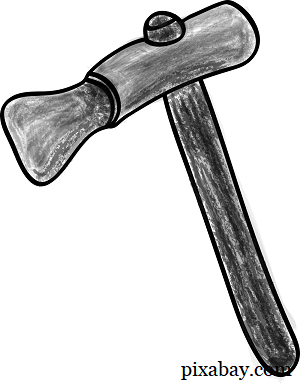 While they have all gone through numerous design changes through the years, we find all three of these still in use today. That speaks volumes about their effectiveness.
While they have all gone through numerous design changes through the years, we find all three of these still in use today. That speaks volumes about their effectiveness.
Making weapons is an art, especially making them from natural materials, using only primitive tools to work with.
Being able to shape a bow out of a tree branch, with nothing more to work with than a stone knife and other rocks, can’t be easy.
Yet these hunters did just that, along with knapping arrowheads, spear points and knives.
While it is hard to imagine society falling to the point where the ability to make our own weapons, for both hunting and defense, is essential for survival; the possibility does exist.
An even greater possibility exists for having to make such weapons if we are suddenly thrust into a wilderness survival situation. Should that happen, our ability to make these weapons could very well spell the difference between life and death.
Finding Natural Shelter
I seriously doubt that mankind started out building houses, even the primitive sorts of houses made by indigenous tribes. Rather, what little evidence exists, shows that our earliest ancestors lived in caves, something they probably learned from wild animals.
Caves are actually excellent natural shelters, providing the essentials of protection from rain and wind, as well as doing a fairly good job of holding in heat.
Some prehistoric people groups, such as the Indians who populated Mesa Verde, improved upon their natural caves by using stones to make rooms, dividing large caves into private habitations for multiple families.
The idea of building homes came from these people migrating to areas where there were no natural caves to live in. So they were forced to use whatever materials were at hand to build an artificial cave. I imagine those first houses were rather primitive by today’s standards, but they did the job, protecting their owners from the elements.
Sadly, we don’t have any examples of what they looked like, so that we could learn their technique. But I would venture to guess, they were simply more primitive or rustic versions of the native houses we have seen.
Making Clothing from Animal Skins
According to the Book of Genesis, the first clothing was made by sewing fig leaves together. While that may have covered their bodies, I’m sure it didn’t wear well. God solved that problem for Adam and Eve by killing animals and making them clothes out of the animal’s skins.
One of the many ways that mankind is unique is our need for clothing. No other species on the face of the Earth needs to wear clothes; those that need it, have fur to keep them warm. But even the hairiest of humans doesn’t have enough hair to do much for retaining warmth.
Using the skins of animals that they had hunted is a logical solution to the problem of clothing. After all, those pelts kept the animals warm, so therefore, they should work to keep people warm as well. The amazing thing is that prehistoric man figured out how to tan leather, so that those skins would last and then figured out how to sew it together to make clothes.
But rare is the hunter today that has any idea of how to tan their own hides, making it into useful leather or pelts. Rather, we send it off to commercial operations which do that for us. If we were ever caught in a long-term survival situation, knowing how tan hides would be an extremely useful skill.
Edible Wild Plants
As preppers, it seems that we focus more on the hunter side of being hunter-gatherers. I personally don’t have an issue with this, since I’m a definite carnivore. But in a survival situation, knowing what plants are safe to eat is a real boon to the diet.
I’ve been at this survival stuff for a long time, over 40 years. But I am still weak on edible plant recognition. It’s not that I haven’t studied it, it’s that I don’t use that knowledge. So, I end up losing it and need to study it again.
If we aren’t eating the edible plants that nature provides, there is no way that we are going to retain that knowledge for a very long.
The Value of Medicinal Plants
Speaking of plants, early medicine was all herbal medicine. There wasn’t a pharmaceutical industry. Doctors, by whatever name, learned what plants could be used for treating various ailments and how to use them. This information was closely guarded and passed on to an apprentice by word of mouth.

Those early doctors had to gather their own plants and make their own medicines, which consisted mostly of poultices and teas. While I’m sure there are many things they couldn’t treat, they obviously had some success, because their knowledge developed into the modern Medical Industry.
Even today, there are people who are experts in natural medicine, deriving medicines from plants. But these people are largely ignored in modern society, mostly because doctors use products produced by pharmaceutical houses.
But that doesn’t negate the value of natural medicine, as many of the medicines we use today have their roots in those natural medicines. All the pharmaceutical companies do is find artificial ways of creating things that nature provides to us.
If a serious enough of a disaster were to occur, such as an EMP, pharmaceuticals would run out quickly, leaving us without any medicines, other than natural medicines. Having the knowledge of what plants can be used for medicines and how to use them would be an incredibly useful skill in such a situation.
Situational Awareness
I think the American Indians (who qualify as a prehistoric people because they don’t have a written history) and other warlike tribal peoples invented the whole idea of situational awareness. Life was dangerous for these people, full of not only dangers from nature, but from other tribes as well.
The ability to recognize danger, before it manifests is a critical skill; one that is truly lacking in the world today. The world around us, especially the animal kingdom, is sending us constant messages of reassurance or danger, yet we don’t recognize them. We merely hear the birds chirping and think how nice it sounds, not that it might actually mean something.
The Value of Community
Early man was tribal, with the village being the tribe. This was even true of migratory people who followed the animals they hunted. Banding together helped them in the hunt, in defense and in sharing other common tasks. Ultimately, this made survival easier for them and led to the establishment of cities and society.
This is probably another skill that prehistoric man learned from watching animals. Many species of animals live in groups or herds. Predators found it easier to hunt together in packs and their prey found it easier to survive by staying together and presenting a united front. While some always died, the herd itself survived, which was the important part.
As mankind banded together, individuals began to specialize in specific tasks, putting their energies into performing those tasks and becoming more adept at them. This led to the beginning of the barter system, where these skilled artisans would trade their handwork for other things they needed.
Specialization was an important stepping stone in the development of society, as it increased the efficiency of individuals’ work, while at the same time providing a platform for improvement and innovation. Those who specialized in making certain handicrafts developed the skills and interest necessary to find ways of improving their products.
Through this, new features improved the traditional weapons and tools that primitive man used. Over the course of time, this actually led to the industrial revolution.
Waste Not
Primitive man didn’t waste anything. We see this best, through examining the culture of the American Indians. They used every part of the animals the killed, letting nothing go to waste. Internal organs, which were not eaten, were often made into containers, sinew was turned into bow strings, bone became tools and weapon handles, and skins turned into clothing and housing.
You never found a waste dump located next to an Indian village. That’s because there wasn’t any garbage to throw away. Rather, they made use of pretty much everything in one way or another.
Should we find ourselves in a survival situation, we would need to do the same!
This article has been written by Bill White for Survivopedia.
from Survivopedia
Don't forget to visit the store and pick up some gear at The COR Outfitters. How prepared are you for emergencies?
#SurvivalFirestarter #SurvivalBugOutBackpack #PrepperSurvivalPack #SHTFGear #SHTFBag
My Garden Will Not Fail Me
Written by Guest Contributor on The Prepper Journal.
Editors Note: A guest post from Mark Taylor of greengardennutrients.com to The Prepper Journal.
I often wonder, if an actual long-term disaster occurred, would it be all that difficult to survive at our little safe haven with family and friends? We have planned for this SHTF thing for a while now so we are totally ready for it. Yes, plenty of ammo to last many years, a couple of years of food supply, and a good setup to clean our water if need be.
During our planning, it was obvious that we will likely run out of the most critical thing first, our food supply. With that in mind, we chose an area that will have a 4-6 month (or longer if you can take the summer heat) growing season. We fully intend to grow our own food and we will start the moment we settle in.
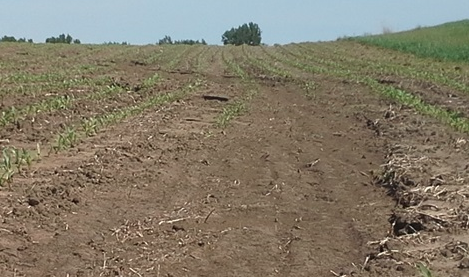
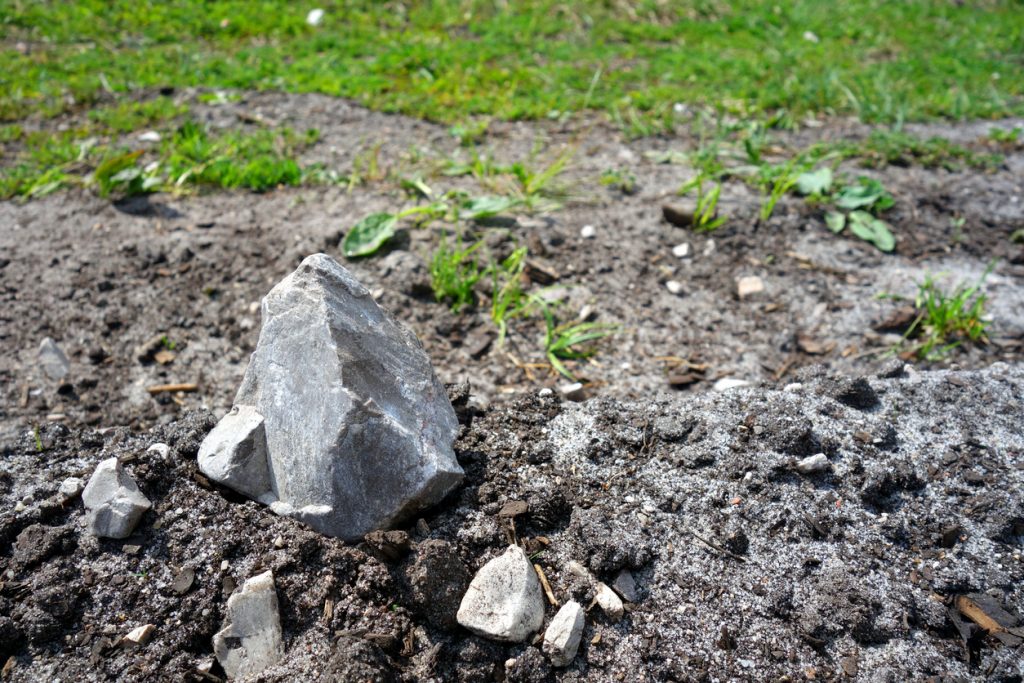
Unfortunately, in most areas, the soil will not support a garden very well. In fact, it will likely fail us or under perform year after year. If you have ever tried growing vegetables in your backyard, you know how hard it really is. The most common failures are due to inadequate nutrients in the soil and lack of water. If we have a water supply in place, our primary concern will be food for our plants. One thing we must get straight in our heads is what plants need to grow. We cannot afford to be wrong about a single thing.
Aside from sunlight, air, and water, plants need 13 specific nutrients in the soil to grow and produce fruit and seed. Now we can do the “Organic” thing and bring along 16 tons of manure and compost for every acre of land we set aside or we can get real and bring along a highly concentrated and natural material. You guessed it, fertilizers, those that contain the actual elements that plants must have to grow.

Now don’t get me wrong, we are going to end up with a self-sustaining garden that is fed from organic waste overtime but this takes years to accomplish. We do not have years, and we for sure are not going to bring 16 tons of chicken manure with us. We get a couple of tries at this and that’s it before our stored food supply is gone.
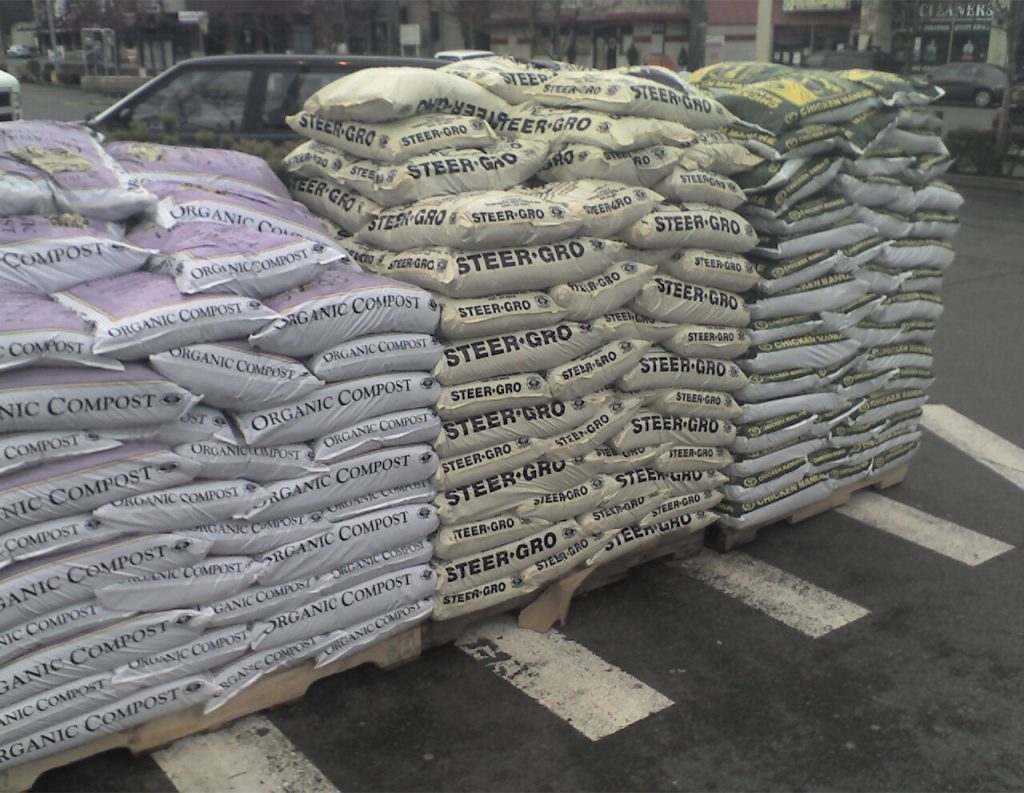
So, let’s discuss what fertilizers really are. Most people instantly think “chemicals” when they hear the word fertilizer. At the same time, the word “chemical” brings to mind danger or poison. Just like a firearm, we must truly understand what we actually have in our hands as we use it.
The fact is, fertilizers are nothing more than elements that are removed from rock and air. No different than what is in our bottles of vitamins and minerals, just plain old elemental calcium, potassium chloride, zinc, and so on. These are the elements that we are going to have with us when we get to our safe haven. A few bottles of vitamins and minerals for us, and a few hundred pounds of plant ready mineral elements for our crops.
With everything that will already be working against us such as the weather, bugs, poor soil, and no real farming experience, we must be on top of everything we can control. The limited amount of seed we have in storage will need an instant supply of nutrients, and that supply of nutrients cannot run short at any moment prior to harvest.
To keep costs down and to lighten our load, we need a fertilizer that is as concentrated as possible while still being in the proper proportions for a variety of crops. Too much magnesium will cause problems with phosphorous metabolism in plants while not enough calcium will cause water uptake problems. Use calcium carbonate or calcium sulfate as the primary calcium source, and you may as well have not added it. It will be months before these materials break down and are available to plants as soluble calcium.

All components in our fertilizers must be as close to 100% water soluble as possible and be immediately available to our plants the moment water touches it. This is no easy task to accomplish and much less, is it available in the market?
Take Miracle-Gro tomato plant food for instance. It claims to be specifically for tomato plants yet it contains absolutely no calcium. How can this stuff possibly work when all tomato plants use more calcium than they do nitrogen? That fact is it does not work. The tomato plant will die long before it produces a ripe tomato, if a soluble form of calcium is not added. We could take the chance and rely on the possibility that there is soluble calcium in our soil but in a true SHTF scenario, this is absolutely not going to happen in my world. I am completely eliminating the possibility that my food crops will fail to produce because all 13 required nutrients were not available.

Most of us have no idea what to look for on a product label and there are literally thousands of products out there. I have fair grasp as to what I actually need to make a plant grow to its fullest potential and unfortunately, “Houston, we have a problem”.
This is a reality, I have looked at thousands of products over the years on several product databases and have found only a few products that had all the required nutrients in the proper form and is available in a fairly concentrated mix.
The problem I found most often was that the Producer did not offer shipping and it had to be physically picked up at their location. Of the few that would ship the product, the shipping costs were higher than the actual cost of the product.
If you ask me, this pretty much is the SHTF, in that it is so difficult to find a suitable product, unreal. I do ask that every reader do his or her best to find a reasonably priced mix and post and let The Prepper Journal know what you have discovered.
As for me, I said to heck with it and just started making it myself.
The post My Garden Will Not Fail Me appeared first on The Prepper Journal.
from The Prepper Journal
Don't forget to visit the store and pick up some gear at The COR Outfitters. How prepared are you for emergencies?
#SurvivalFirestarter #SurvivalBugOutBackpack #PrepperSurvivalPack #SHTFGear #SHTFBag
Wednesday, December 27, 2017
Beginner’s Guide to Archery for SHTF
by Morgan
I’ve been an archer for around 14 years. I learned to shoot with a recurve when I was in college and I immediately fell in love. After that class ended, I ran to the nearest bow shop and picked up a compound bow. It was a Browning and it was beautiful. I shot a lot, but I never took it seriously and my accuracy was always way off, but I didn’t care as I was doing it for fun.
I moved to a new state and the movers lost my bow. I was so devastated, I loved that bow, I had had it for years and now it was suddenly gone. I didn’t pick archery back up for many years after that....
from TheSurvivalistBlog.net RSS Feed
Don't forget to visit the store and pick up some gear at The COR Outfitters. Are you ready for any situation?
#SurvivalFirestarter #SurvivalBugOutBackpack #PrepperSurvivalPack #SHTFGear #SHTFBag
How To Keep Your Farm Animals Safe During Winter
You store back plenty of firewood and make sure the roof and windows are all secure. If you have a fireplace, you may have the chimney cleaned or the brickwork checked.
You may even buy a wood-burning stove just in case the power goes out. You do all of these things to make sure that you and your family stays safe in the winter, but what about your animals? How do you keep your farm animals safe in the winter?
We’re going to get to that today, so that your meat sources – and your pets – stay warm and healthy over the winter months.
Ventilation
First, you need to know that not all animals have the same needs, and sealing all the drafts in a barn or chicken coop is a bad thing, not a good thing. It’s great that you want to keep out that cold air, but it’s a misguided effort even in the far north. Your barn and your coops need ventilation to keep your animals healthy.
Chickens and farm animals create an amazing amount of water both through breathing and urination/defecation and if that water vapor doesn’t have an escape route, your coop or barn becomes a breeding ground for bacteria and mold that’s harmful to both your chickens and you. Your chickens are also more susceptible to frostbite if the coop is humid.
Finally, ventilation keeps your coops and barn from becoming too hot. Yes, even in winter! Just like with any creature, your animals emit body heat and if you have many of them in a relatively small space with no ventilation, it can become too warm.
You do, however, need to keep them safely warm. Birds especially are prone to frostbite on their waddles and feet. In addition to keeping them safe, keeping them comfortable will also help keep your farm animals producing eggs and milk. You take care of them and they’ll take care of you!
Of course, if you’re getting a blizzard or are having an extreme cold snap, you can shut the coop or barn up for the night, but open it up, at least in intervals, throughout the day to let air circulate.
So, how do you find the happy medium between providing adequate ventilation to let in fresh air and let out air that contains the ammonia and other harmful waste? With coops, you should build it so that there’s a small gap between the rafters and the roof, adding flaps so that you control the amount of ventilation. You can also put in screened windows so that you can crack them and have more control over the ventilation.
Proper Shelter
We’ve always had cows and horses – and a barn – and people would see the horses standing outside with a layer of ice on their backs and feel badly for them. Strangely enough, that layer of ice or snow is actually keeping them warm, especially if it’s relatively dry.
How? There’s a gap between the ice and the skin formed by the animal’s coat, and heat is trapped in that space. Now if the animal is soaking wet when the ice settles, this doesn’t apply so much. Also, if you’ve kept your animal from growing its winter coat for show purposes, it needs a blanket in much warmer temperatures than an animal that grew a coat.
Even if you don’t have a barn, you should at least have a lean-to that they can use to get out of the weather.
Ensuring Adequate Food and Water
This is critical because many animals actually need more food and water in the winter than they do in the summer. That may sound backward but it’s really not if you think about it. We take in moisture in more ways than one. Believe it or not, your skin absorbs water when you shower and even from the air. So do other animals.
But in the winter, the air tends to be dryer, so there is less moisture in the air to keep us hydrated. That’s one of the reasons, anyway.
You’ll probably notice that your chickens drink more, as do your dogs, cats, horses, goats, cattle, and every other critter on your farm. Keep their water bowls, buckets and troughs full of fresh, clean, unfrozen water. Check it at least a couple of times throughout the day to make sure it’s not frozen.
Food needs change, too. Shivering and maintaining body heat uses a lot of fuel and most of our animals don’t have a large supply of fat to meet that need. Therefore, you need to feed them more. Some people switch to a higher fat and/or protein feed in the winter so that they get more nutrients for the same buck. Hays such as alfalfa offer more protein that other hays, too.
Hay often lacks the nutrients that fresh grass carries so you may need to supplement with grain and minerals to make sure that nutrition is adequate. Also, animals burn more calories in cold weather so they’ll need more to eat and drink in order to stay fat and sassy through the winter months.
Clear Ice
Ice is a monster we all have to fight in the winter. Just like us, if a horse, cow, goat, or other animal falls, it can break hips, legs, and other bones. Unlike us, that’s often a death sentence.
Horse’s hooves, especially, ice over. They’ll build balls of ice because of the way their hooves are cupped on the bottom and if they come running into the barn with those on their feet, they can easily trip.
Other places that ice accumulates is in doorways of barns and milking stalls. I’m not saying you need to go out and shovel them path, but be aware that ice and even mud presents a danger to them, too.
Check Pastures for Debris
Do this before the first snow falls. Make sure there are no buckets, broken boards, downed fencing, or anything else that can be hidden under the snow only to be stepped on later. If you’ve never seen an animal tangled in fencing wire, count yourself lucky and pray you never have to. It’s not pretty, so make sure there’s no loose fencing wire or any kind of debris laying around your pastures.
Keep Your Animals Separate from the Neighbors
Animals get sick just like people do. So, if we don’t want to get the flu, we don’t go near people with the flu, right? Well we don’t have that luxury with the neighbor’s animals. We have no idea, unless you’re talking to them and they tell you the truth, whether or not their animals are sick.
Cold weather already taxes your animals’ immune systems, so don’t make it worse by exposing them to potential diseases or illnesses presented by surrounding animals. If possible, keep them separate.
Winter is a tough time for animals as well people and it’s our job to take care of them. If you want them to continue to give you eggs, milk, and meat, you need to keep them happy and healthy.
If you have any other suggestions for taking care of animals in the winter, please share them in the comments section below.
This article has been written by Theresa Crouse for Survivopedia.
from Survivopedia
Don't forget to visit the store and pick up some gear at The COR Outfitters. How prepared are you for emergencies?
#SurvivalFirestarter #SurvivalBugOutBackpack #PrepperSurvivalPack #SHTFGear #SHTFBag
How Church Life Will Change in a Post- Apocalyptic World
Written by Guest Contributor on The Prepper Journal.
Editors Note: Another guest post from Red J to The Prepper Journal. As we mull over our New Years resolutions, this article may give us a few ideas, may set on on a path to thinking of things that will directly effect us that we may not have considered to date.
I have been a pastor for 20-plus years. Since I discovered prepping, I have sometimes wondered how life will change for churches and pastors in a post grid-down scenario. Even if you are not a believer, your community will be affected. Here are my thoughts on how church life will change. Most of these ideas will apply to all religious groups in general, not just Christians and churches.



Life in a grid-down situation will become extremely difficult. Will faith endure when people face incredibly hard decisions? The closest Biblical parallel is in the prophetic period in the later period of the Old Testament. Some believers will feel like they’ve been abandoned or punished by God, and/or that God does not love them anymore. All those unconditional promises by clergy speaking for God, will seem like broken promises. Some may lose hope and forsake the faith. There will be questions of sin, God’s punishment, and whether faithful believers can still claim a covenant relationship with God. Can one still believe and hope in God when the material things have been stripped away? Can one still hope in God when one sees so much death and devastation? How can one trust in a God who allows so much pain and suffering? Church leaders will be severely challenged by such questions and complaints.


The degree to which church leaders adapt to this new way of faith, will determine how effectively they can lead people of faith. A study of Old Testament prophets could equip one to adapt faster to a similar period; investing in a few books or commentaries would prove helpful. A study of how the Israelite’s survived the prophetic era, would equip believers in a similar period. Studying how the Israelite’s survived the exile, could help those who will be uprooted by unforeseen hard times. Clergy and Bible teachers would be wise to begin studying the prophets and the exile now, so they will be prepared to help believers when times become unimaginably difficult.
One practical change is that people will stop driving to church. Imagine neighborhood churches in which people walk or bike to a church with others from your neighborhood. Even if vehicles still function after an EMP, people will probably not use precious fuel to drive 20-40 minutes to church in another community. That means that local churches will reflect the people in your geographic area.
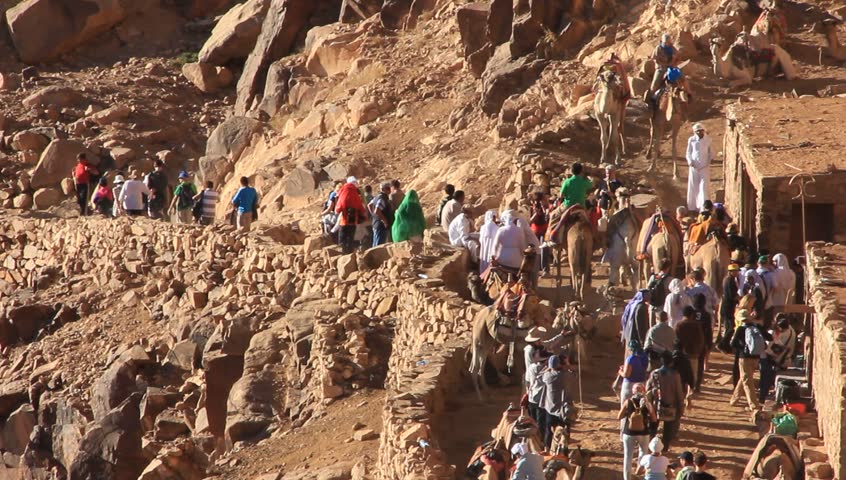

This may have good and bad consequences. It will be positive in that seeing your neighbors in church will reinforce your relationships with your neighbors, which may lead to cooperative arrangements and bartering with neighbors you trust. This will mean that you will get to know some neighbors that you rarely see now. Perhaps this means letting your neighbor borrow your roster for a few weeks, in exchange for some eggs. Or your neighbor plowing your large garden, in exchange for part of a hog. Maybe this means the people on your block getting together for a winter social event in someone’s shed or barn.


However, this may be negative if one has a bad experience with certain neighbors. For example, let’s say you agree to rototill a garden for a neighbor, in exchange for his cutting firewood for you. You did your rototilling, but your neighbor has not yet done his part. Now winter has begun, and your wood supply is growing short. How will you feel about seeing this neighbor in church? Or imagine that things have been disappearing in your neighborhood. No one knows who the thief is, but your neighbors suspect that it’s someone from your neighborhood. When you go to church, you find yourself wondering if it could be someone in your congregation.
Losing electricity will affect churches whose current pastors commute more than a few miles. If your pastor drives more than a few miles to your church, he will not likely continue serving your church in a grid-down scenario. Consider if an elder or person in your neighborhood could step in as the pastor in an emergency.


There will be a large demand for pastoral services like leading worship, teaching Bible studies, pastoral care and counseling. Remember how church attendance soared in the months after 9-11? I foresee a similar response to a grid-down scenario. However, when US dollars have little value, how will pastors and clergy be compensated? This is no small issue for pastors who have a family to feed. Back in the 1800s, it was common for pastors on the frontier to be paid in garden produce, eggs, a chicken, part of a hog that was butchered, or venison after a deer was shot. While that will help pastors, it will not likely be sufficient for provide for his family’s needs. Thus, it would be wise for prepping pastors to learn a couple other skills to help provide for their family.
Look at utilities for church buildings and parsonages. If your facility depends on natural gas or electricity, you may be wise to make contingency plans. For example, will your church building and/or parsonage have a wood stove for winter heat? Are there enough trees and forest in your area to provide wood for everyone who will be cutting it down? Will an outhouse be built behind your building after a disaster? Will you have a way to procure drinking water when electrical pumps fail? These challenges will come up quickly after the grid goes down. Thus it’s wise to have plans and materials in place now. If you and your church do not have contingency plans in place, it will take you longer to respond to a radically different way of life after a major disaster.
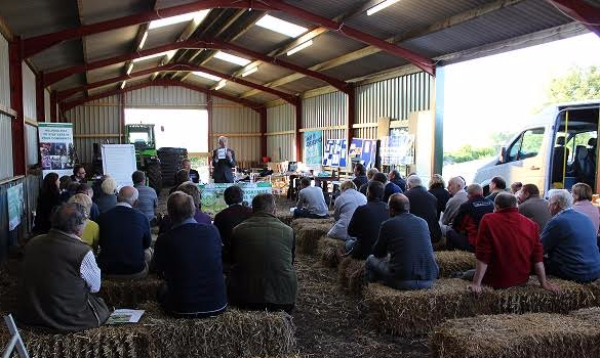
When times get hard, there may be congregations that don’t meet in a traditional church building. Some congregations may meet in a shed, barn, picnic shelter at a park, or backyard, especially if a church building is not available. Another option is for two congregations to share a building.
Can a congregation play a role in forming mutual survival groups? Some pastors know their members well. If you’re thinking of asking a member to be part of your group, you may want to ask your pastor for his thoughts on that person. He may recommend that person positively, or he may suggest being leery of that person. This is like asking your pastor to be a personal reference. There may be others in your church that you may want to ask to be a reference. Discernment is crucial when asking others to become part of your group. When asking someone for their personal thoughts on another person, assure that person that what s/he says will be kept confidential, and then keep it confidential.
Another issue will be, how will your congregation respond to those asking for food or other assistance? Such requests will increase after a disaster, and likely increase dramatically. Do you have a way to separate the legitimate requests from those who simply don’t want to work? Here’s where a neighborhood church has an advantage. Chances are, people on your church board will know who in your neighborhood has a genuine need and who has trouble getting out of bed on time or is wasting precious resources on alcoholic indulgences.

If you are a minister, you may want to get some training on caring for trauma survivors or counseling those with PTSD. It wouldn’t cost much to buy a few books on caring for those with trauma or PTSD. It may also be wise to be prepared to train members in helping those with trauma or PTSD because there will be many with those issues after a grid failure. Imagine how your church could be a blessing in your community if you trained a dozen people to help trauma victims in their families or circles of friends. Such care will help those individuals and families adjust to a different world. One can also download YouTube videos on helping people with PTSD, as long as one takes precautions to protect your device from an EMP.
In a grid-down scenario, schools will cease functioning, leaving a void for the education of children. I believe that churches could fill that need, if one is willing to make some plans. Teachers today relay on the internet and a smartboard for daily lesson plans. Imagine an elementary school using supplies and methods of a generation or two ago. That means using chalkboards, textbooks, pencils, and paper tablets. If your church prepares by buying such materials, it may not be hard to provide math, reading, writing, and U.S. history for kindergarten through 4th grade. There would be an adjustment period for teachers, students, and parents. Can a school function without buses, electricity, telephones, or internet access? Yes, if educators are willing to rely on methods of previous generations.
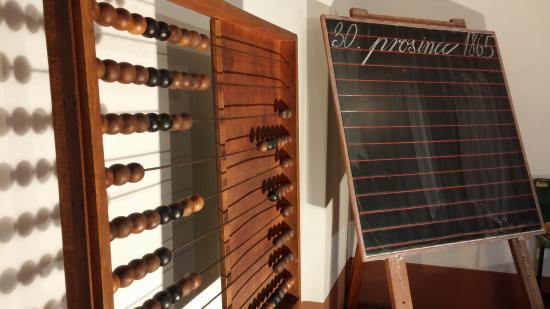

If you wonder about the education of older children and teens, I believe that they will be needed to help supply water and food for their families, because meeting our basic needs will require much more work and time. My parents grew up in the days when boys dropped out of school because they were needed on the family farm. Middle school and high schools will be seen as unnecessary luxuries that only a few can afford. However, I do see a future for apprentices to learn a skill. If you’re a hunter, farmer, gardener, blacksmith, or seamstress who can train others in those skills, it could be a way to supplement your income.
Church leaders will be challenged to show that faith, hope, and love can endure unimagined difficulties. When lifestyles change after a grid-down situation, there will be challenges and opportunities for pastors and churches that are prepared for a different world. Will your church and your pastor be ready?
The post How Church Life Will Change in a Post- Apocalyptic World appeared first on The Prepper Journal.
from The Prepper Journal
Don't forget to visit the store and pick up some gear at The COR Outfitters. How prepared are you for emergencies?
#SurvivalFirestarter #SurvivalBugOutBackpack #PrepperSurvivalPack #SHTFGear #SHTFBag
Tuesday, December 26, 2017
Back To Basics: How To Preserve Food In Lard
When I was growing up, it was a given that the bacon grease would be sitting by the stove in Grandma’s tin canister. Or maybe it was aluminum.
Whichever it was, that grease sat out forever. We used it to fry potatoes or season beans, or just about any other time we wanted to add flavor.
But, knowing what we know today, shouldn’t that grease always be kept in the fridge? My personal answer is “Meh.” It hasn’t killed me yet, and I’m reaching the age where death by bacon grease is the least of my concerns. I mean, if I have to go, at least I know I got one flavorful last meal, right?
Seriously, though. Does animal fat, including lard, have some sort of preservation properties? Sort of.
Meats like bacon have two things going for it. First, it’s cured in salt. And in the case of modern, store-bought bacon, nitrates and nitrites are often in there as preservatives, too. We know that salt is an effective preserving agent. It creates an environment where bacteria can’t thrive.
Add that to the grease, which isn’t a great environment for bacteria growth either, and you’ve got a decent preservation method. The fat essentially seals out the bacteria, much like waxing your jellies.
But recently, I heard about meat being preserved in just lard. Lard has no salt or other chemicals in it – just fat. Specifically, pork fat.
So is there some magic quality to this that makes it keep meat from going bad? Can you preserve meat in simple lard? If so, that could be great for those of us who are worried about survival when SHTF.
Plus, lard is easy to make.
From what I discovered, storing meat in lard or another fat would be effective for the same reason that waxing it is – it keeps the bacteria locked out of the food.
Confit
In researching this question, I found that it’s been a common practice for centuries, in various forms. In French, the word confit means preservation.
You’ve probably heard of duck confit because it’s a delicacy. The traditional confit method involves salt-curing the meat – usually duck, goose, turkey, or pork – then poaching it in its own fat until it’s tender and storing it covered in that fat.
Back then, they didn’t refrigerate it at all. They just trusted the meat fat to preserve it.
You can do that if you want, but we don’t live in medieval times anymore. Take advantage of the modern conveniences and refrigerate it, at least until you can’t anymore.
A properly confited bird will store in a cool, dry place for 6 months, then you can repeat the process and extend it by another six months, though you should eat it in the first six months to get the best flavor.
The process is the same for pork or beef. Today, many people skip the whole sat-curing step and just preserve it in the lard, suet, or schmaltz (bird fat). I wouldn’t recommend that, though. Salt is a powerful preservative that adds flavor as well as protection.
So, can you just cut off a slab of meat, stuff it in lard, and leave it alone? Absolutely not. For a few reasons. First, the meat may have bacteria in it already. That’s why cooking, or even better, salt-curing then cooking, is important. Also, if you’re storing food, you should probably make sure that the container you’re using is free of bacteria before you put the lard in it. And just to be safe, heat that lard up, too.
For that matter, cook the meat in it in the traditional confit manner.
Madeleine Kamman, author of The New Making of a Cook, offers up this recipe for making a salt-cured duck confit. Because of the curing, it is at least a two-day process. But if you want to have prime duck legs five months from now, that may be a small price to pay.
Confit of Duck
- Ingredients:
- Six duck legs
- 36 garlic cloves
- 8 cups of rendered duck fat
- kosher salt
- 1/2 tsp ground cumin
- 1/2 tsp ground coriander
- 1/2 tsp ground cinnamon
- 1/2 tsp ground allspice
- 1/2 tsp ground ginger
- 1/4 tsp freshly ground nutmeg
- 1/8 tsp ground cloves
- 1/4 tsp finely crumbled dried thyme
- 1 Turkish bay leaf, finely crumbled
Instructions:
Mix all the spices together and sprinkle them evenly over the legs. Measure out enough kosher salt to have 1/3 ounce for each pound of meat, and sprinkle it evenly over all sides of the legs. Set them in a flat, glass baking dish with the garlic cloves, cover with plastic wrap, and cure them in the refrigerator for 36 hours.
Preheat the oven to 275°F (135°C;). Drain all the liquid from the baking dish. Pat the legs, garlic cloves, and dish dry. Return the legs and garlic to the dish and cover with the duck fat.
Bake until the garlic cloves have turned a deep golden color, which will take 2 to 2-1/2 hours. Let the meat cool in the fat until it can safely be transferred to a large canning jar.
Strain the fat through a cheesecloth, and pour enough over the meat to cover it by at least an inch. Cool it completely, seal the jar, and store it in a cool, dark place such as a cellar or refrigerator for up to six months.
Straight Lard Preservation
According to Frank G. Ashbrook in his book, Butchering, Processing, and Preservation of Meat:
“Good lard has so many uses, it is so digestible, and forms a foundation for so many tasty dishes that it pays to render and store it with extreme care. It is also a satisfactory preservative for meat if only fresh meat is used and if precautions are taken to keep everything clean and sterile.
Cook meat as you would cook it for serving. Place it in a dry, sterilized crock and cover immediately with hot lard. Cover with clean wax paper and place on this a crock cover or plate. Store in a cool, dry place. Do not keep meat packed in lard during hot weather unless the storage place is always cold.
When meat is removed from the crock, be sure to pack down the remaining meat and cover it again with melted lard so that no air will reach it. It is better to store this meat in small crocks than in large ones, for then it will not be disturbed so often.
Roast pork, pork chops, pork steaks, and sausage patties can be cooked and preserved in lard.”
To touch on this for a minute, I do know that all of our canned meats always have a nice layer of fat on top of them and people cooked their meat, stuffed it in a jar, covered it in fat, then put the rings and seals on while it was hot.
If you have any tips or information on curing meats or survival in lard or other fats please share them with us in the comments section below.
This article has been written by Theresa Crouse for Survivopedia.
from Survivopedia
Don't forget to visit the store and pick up some gear at The COR Outfitters. How prepared are you for emergencies?
#SurvivalFirestarter #SurvivalBugOutBackpack #PrepperSurvivalPack #SHTFGear #SHTFBag




